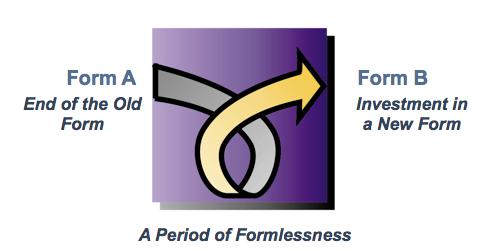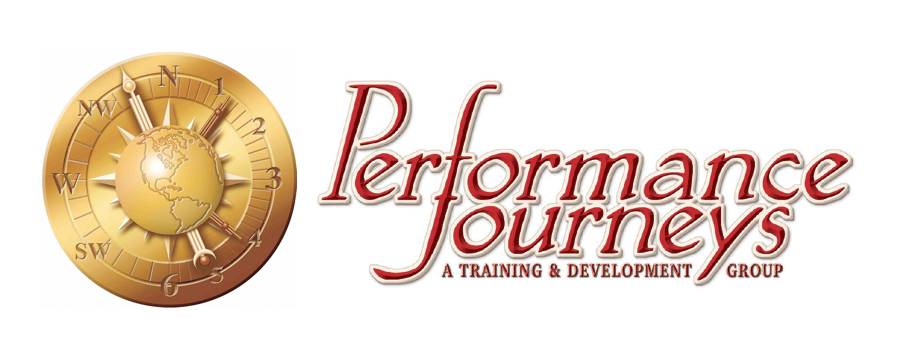Confronting change can be a difficult experience. Simply defined, it is the process of going from one form to another. Those in organizations seeking to become more successful know that change happens. But it doesn’t always make it easy. That said, there are many factors that impact our day-to-day activity, and even the most well-laid plans can be impacted from time to time. So it’s helpful to understand the process people go through when they have to adjust to that change, or move from one reality to another. Confronting change, or managing the “chaos” that can happen will look like the following:

This model, created by Chuck and Mary Lofy, is similar to Tuckman’s stages of group development–Storming, Forming, Norming, and so forth. Yet the visual here offers an opportunity to see how an organization may temporarily dip as it re-builds itself. It suggests that movement from one form to another requires that we dip down into an unproductive and even emotional state before spiraling back upwards. Most importantly, it emphasizes that sometimes you can’t move from one form to another simply by drawing a straight line. By recognizing that this is a normal human response, and by allowing it in others, we become more empowered to taking steps that enable us to move forward with more clarity. Here are the steps that will help you and others get through the chaos:
Gather the Facts. Get clarity around what is happening and why. Identify not only what is known, but also what is not known. This is an important place for leaders to be as transparent as possible.
Assess. Consider what these changes mean to your work, activities, etc. Also consider what they mean to you and others personally.
Engage. Have conversations and dialogue with others so you can process what is happening. Identify facilitators who can help people work through their expectations.
Guidance. Get the support and assistance you need to make the change successful. Set yourself up for as much success as possible.
Consider the following:
- What changes do we need to make in order for our work to become successful? What does Form A look like to us? What does Form B look like?
- What chaos, however minimal, may we experience in getting to where we need to be organizationally?
- What facts do we need to gather? What issues do we need to assess? What would constructive dialogue with others look like around this matter? What guidance do we need?
I have had experiences in my life when dramatic change came to me in my business, as well as in my personal life. Of course, little that happens in business compares to that which may happen to home or family. But our work is still a major part of who we are. To dismiss changes in the workplace as “part of doing business” is to invite something far worse than temporary chaos. Everyone can eventually deal with disruption in our work. But if we don’t take the steps to work our way through it, we may spiral down to a place far worse than what temporary chaos may bring. Leaders must take the steps to help their employees work through the chaos and eventually arrive at a far better place.

Comments are closed.